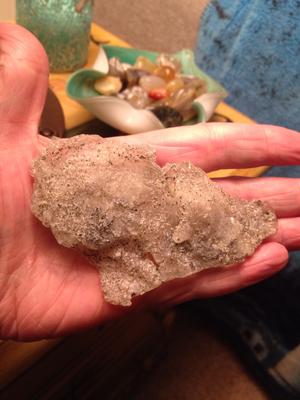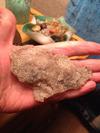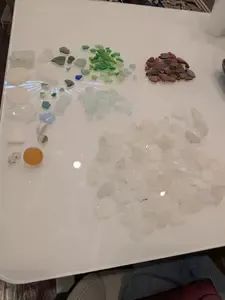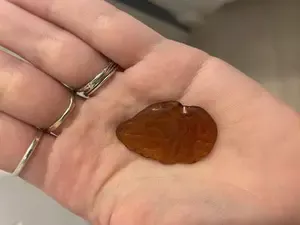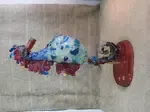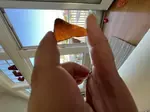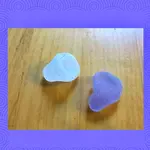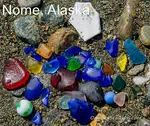Sea Glass from Lincoln City, Oregon - What is It?
by Cindy Rader
(Juneau, Alaska)
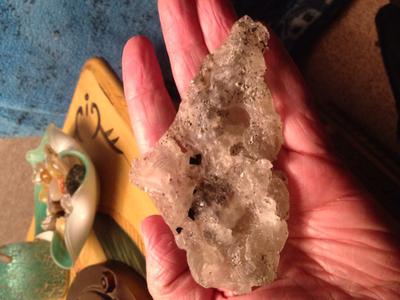
Lump of Sea Glass - What is It?
~ sea glass identification question submitted by Santelices in Miami, Florida
What is this large sea glass from Lincoln City, Oregon?
I found this fairly large piece of sea glass on a beach in Lincoln City, Oregon.
It is quite rough and has sand trapped inside.
Could you help me determine what it could have once been.
I have included pictures of both sides of the glass.
~ sea glass identification question submitted by Santelices in Miami, Florida

Usually, when beach glass has sand trapped inside, it has been melted in a campfire or bonfire.
Sometimes there is a cavity left inside or the sand may be embedded in the glass.Usually the glass is very uneven; however, if it was melted long ago and has been tumbling around in the surf during that time, it can become pretty well rounded and smooth.
Sea glass that has been melted is called "firemelt" or "bonfire glass."
Although your piece is much larger than what would normally be found, you can be almost certain that is bonfire glass. Very interesting and unique find!
~ David from Odyssey Sea Glass
Scroll down to see comments....
| Sea Glass Products by David and Lin at OdysseySeaGlass.com - From mugs to baby shirts, aprons to tote bags, etc | |
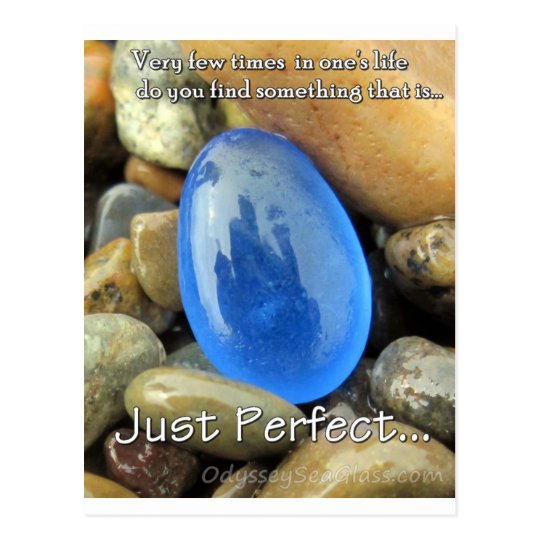 "Just Perfect.." |  I Love Sea Glass - Tees & more |
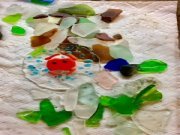 Lincoln Ciy, Oregon, USA |  Oregon Sea Glass |
Comments for Sea Glass from Lincoln City, Oregon - What is It?
|
||
|
||
